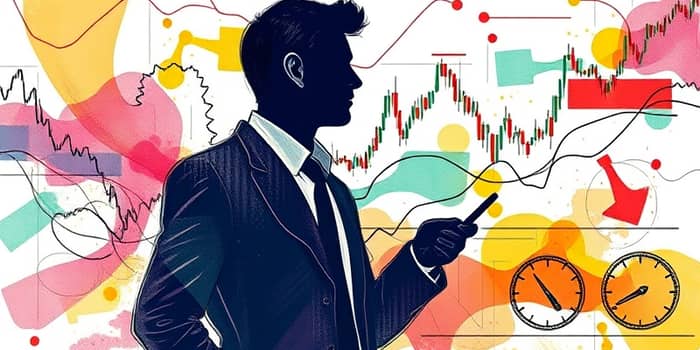
Market risk is often distilled into a single word: volatility. Yet, this simple term conceals a rich tapestry of measures, each capturing unique dimensions of uncertainty. Understanding these nuances empowers investors and risk managers to navigate markets with clarity and confidence.
At its core, volatility quantifies how much an asset’s price fluctuates around its average. These fluctuations reflect the market’s collective judgment, emotions, and reactions to new information. When volatility rises, fear and opportunity coexist, inviting deeper analysis rather than paralysis.
By grasping the meaning behind these statistical tools, one can transform raw data into actionable insights, building portfolios that withstand shocks and seize growth.
Several foundational metrics dominate the landscape. Each brings a different lens:
Beyond individual assets, indices aggregate expectations across markets:
Each measure tells a different story. Historical metrics highlight past randomness, while implied metrics capture future uncertainty. Beta quantifies sensitivity to broad market moves, and drawdown reveals the severity of past losses. By combining these, investors can form a holistic risk profile.
Key thresholds guide decision-making. A VIX between 15–25 often signals moderate uncertainty. Readings under 15 suggest calm, while levels over 40 warn of panic. Similarly, a beta above 1.2 indicates aggressive exposure, urging careful sizing in your portfolio.
Volatility arises from a confluence of factors, each capable of sending tremors through markets:
No single metric captures all dimensions of risk. Historical data cannot predict sudden regime shifts. Volatility measures treat upward and downward moves equally, yet investors often care more about downside surprises. Overreliance on numerical models without stress testing can breed false security.
To avoid these traps, blend volatility metrics with value-oriented measures like value-at-risk (VaR), the Sharpe ratio, and scenario analysis that stress-tests extreme events.
Translating volatility insights into action empowers portfolios to thrive across regimes:
Risk-Adjusted Position Sizing: Allocate smaller weights to high-volatility assets, preserving capital during turbulent periods. Conversely, deploy additional capital when metrics suggest subdued uncertainty.
Options Strategies: Use implied volatility to time straddles, strangles, and protective puts, capitalizing on expected swings or hedging against tail risk.
Technical Adaptation: Implement Bollinger Bands or Average True Range (ATR) to detect regime shifts in real time, adjusting entry and exit points accordingly.
Institutional Applications: Integrate volatility inputs into stress tests and VaR models, then overlay qualitative scenarios—such as geopolitical shock simulations—to capture hidden vulnerabilities.
Volatility need not be feared; it can be harnessed. By comprehensively understanding metrics like standard deviation, beta, drawdown, and implied volatility, investors gain a nuanced lens through which risk becomes manageable. Benchmarks like the VIX crystallize market sentiment, while sector-specific indices illuminate hidden exposures.
Remember, metrics are guides, not prophets. Combine quantitative tools with qualitative judgment, and employ scenario-based analysis to prepare for the unexpected. In doing so, true risk is not a blind spot—it becomes a map, leading to informed choices, resilient portfolios, and the potential for extraordinary returns.
References













